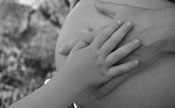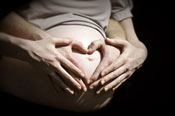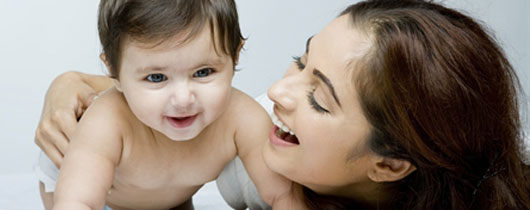
When labour has finished you will find that your womb is still quite big. If you feel your abdomen you feel the uterus almost up to the level of your navel, about the size it was at four months of pregnancy. It continues to contract from time to time, in order to remove the remains of the lining. You may feel some cramp like 'after' pains during the first three or four days after delivery; they sometimes happen while you are breast-feeding, because a hormone is released into your blood at that time and it causes a contraction.

The fetus receives all the food he needs through the placenta from this mother's blood. One of the signs that the placenta is not working well is a fetus that is growing slowly. This slow growth may be found by feeling the size of the uterus or by ultrasound examination. From minute to minute, the fetus also needs a vital supply of oxygen from the mother. If he did not get that oxygen he would soon die. Much of the care of the baby during the modern management of labour is devoted to a careful watch of his oxygen supply.

Vaginal or normal delivery is the safest and most common type of delivery. In this, the mom-to-be goes through proper labor and delivers without any surgery. In breech delivery, baby is born bottom first, as opposed to a vertex delivery when he is born head first. When the baby is in a breech position the doctors may try and turn him so that his head is down - this will be done if it would be safer for the baby to be born headfirst. A breech birth is always undertaken in hospital and a doctor usually does the delivery. It occurs about five times out of a hundred.

Labour is an uncomfortable experience and unless it is very short you will need something to help you when you have a contraction. Pain is always more frightening when you are in a strange place and feel very lonely. Therefore contractions are likely to feel better if you are accompanied by someone you know, preferably your husband, and you know what to expect. There are many useful drugs which are now used to make labour much more comfortable.

Labour is usually divided into three stages: during the first, the uterus is contracting steadily to open up the cervix; in the second the cervix is fully open and the baby is pushed through the vagina and out into the world; in the third stage, the placenta, which is no longer needed to feed and give oxygen to the baby, separates from the wall of the uterus and is pushed out.

Unfortunately, we still do not know when the labour will actually start. Each body is different and so no exact prediction can be made regarding the onset of labour. However, what can be known is that body starts preparing for labor and delivery 20-30 days before onset of labour. You may not be aware of these changes that happen in your body but your body is preparing for your due date.







